#different perceptual realities can coexist
Text

#different perceptual realities can coexist#when we merge them together and accept and embrace all experiences and feelings it expands Source conciousness#we can get easily trapped in our own suffering & despair & shame & victimhood (which could all have very real roots)#but when we deny ourselves the gift of elevating out of it through radical acknowledgment and acceptance#then we hold ourselves down. we drown ourselves. often for the ‘#often for the ‘comfort’ of others#self sacrifice is the most self centered thing you can choose in this life. acting in your own best interest is the best for everyone#we are all one#2024 is the time to get serious#the veil is thinning & the divide is growing starker. please make sure you choose the highest path for yourself#i see sobriety & positive mental change & clarity & responsibility & breaking free from negative cycles#i know that you see the Truth shining through#i know that you always have. i know you are DONE with sacrificing yourself. it’s time to get to actually know yourself & your emotions#i am proud of you. i will see you on the other side. i can’t wait.#mine#the feeling for 2024#kumeyaay#kumeyaay art
0 notes
Text
Bottled thoughts (1) : changes
Very often I find two segments of the trans community pitted against each other; those who choose to medically transition and those who decide not to. In our garbage civilization there are a lot of people who wish to chemically transition but cannot due to the cruelty of circumstances; these folks are in the first category. The second category consists of individuals who see themselves as physically the way they want to be already, just seeking a different perceptual gender role.
In nature away from society, these two groups coexist harmoniously; the decisions made by one individual do not effect the other. The problems do not come from within the trans community, rather, issues are derived entirely from shitty takes introduced by allies and institutions.
For example, an older trans man who decides to not take T or drastically change their appearance is still valid; the average trans person will confirm that this is undeniable and that this hypothetical person is who they say they are. But what about when an outsider views this scenario? The most pedantic view would be pointing out that they might get misgendered often or have other difficulties socializing on a day to day basis. If we look deeper we can see the true evils installed by our socioeconomic systems to sew the seeds of discourse.
Doctors and insurance companies can take the existence of one happy individual and twist it into a generalization and assumption that hurts millions. This trans person, with no attempts or desires to access hormones and surgery, appears to be completely complacent; therefore these things can be labeled as superfluous by policymakers when in reality there are vital live saving tools to be used as frequently as needed. Trans people don't feel contempt about other trans people naturally, the source is always external suppression.
Of course, the inverse case is also true. I, an older trans woman have chosen to jump through insane chemical and surgical hoops to feel more comfortable in an insipid world where I am expected to look, sound and feel a certain way. The pressure put on us by friends, family and corporations to perform or be mocked, insulted and frequently misidentified likely injects a decent amount of resentment for people like me amongst the latter group of trans people whom opt out of medically changing themselves entirely. This divide is not naturally ours, it is abhorrent to who we really are as a group of people who see themselves as being more than the sum of our parts as a whole.
I will atone for my sins of being younger, being frustrated by the ways cis people treated me before I could meaningfully become myself. I will work to uphold the validity of all trans people, even ones in non-binary spaces that I do not fully understand. It is the least I can do to maintain a space where people are who they say they are, and where life has more meaning.
3 notes
·
View notes
Link
Social reality might not be a video game, but there’s no point trying to imagine that. Crass realism obscures the rules. Besides, society converges upon a video game – or immersive ludic simulation – even if it isn’t one already. Such gamification is a trend to note. It has multiple drivers.
As games get more convincing, they increasingly set the default perceptual frame. In technologically-advanced societies, game-like systems are becoming the obvious model for self-understanding. The reception for stories with this slant continuously improves. Even scientific theorizing is drawn to them. The topic might seem less than serious, even definitively so, but ultimately it isn’t. Alternatively, it might be said that there is a non-seriousness more serious than seriousness itself. Everything will be gamified.
In the epoch of WMD deterrence, unlimited warfare is not allowed to happen. Instead, it is perpetually simulated. Every serious military establishment becomes a set of war-games in process. From the peak of virtual thermonuclear spasm, war-gaming cascades down through the apparatus of conventional war-fighting capability, and then spreads outwards – like a blast-wave – through every civilian forum of institutional planning. Eventually (but already) to have been ‘war-gamed’ just means to have been thought through. A war-game is less serious than a war, but it’s the most serious way to process things when war is off the table. It’s also – from its inception – the way to keep war off the table. Si vis pacem, para bellum, which means playing it out.
…
Anything that trains an AI has to function as a game. This is because playing games is the only thing AI can ever do. For synthetic intelligence to be applied to a problem, of any kind, it has to be gamified. Then strategies can be pursued, in strict compliance with rules, to maximize success. Optimization games are the only kind that exist, and inversely.
While games are made, or adopted, for AI to play in, games incorporate AIs into themselves, as components. Simply making games that work requires computer game companies to nurture a semi-independent machine intelligence lineage of their own. Playing against AIs, and also alongside them, is ever increasingly what gamers do. This is what the ‘single player’ option abbreviates, most obviously. The antisocial path stimulates nonlinearity on the side of the machine. Machine intelligence escalation twists into an ever tighter loop, continually intensifying, as it plays games against itself, and against anyone else who wanders in to challenge it.
The games that are relentlessly improving – the kind ‘gamers’ play – are competition for society. They provide an alternative to traditional modes of social involvement. Japanese ‘otaku’ pioneered these paths of departure. Wherever technology crests, the world follows them. Advance tends to exit.
‘Incel’ – or ‘involuntary celibate’ – is in some ways a misleading term for what is happening here. The condition of fundamental social alienation described is no more ‘involuntary’ than any other opt-out. The ‘incel gamer’ no longer finds the most basic of all traditional social relations worth it. There are better games. The revealed preference is evident regardless of what might be said. They grasp games as a way to leave.
At the same time, the PUAs – or ‘pick-up artists’ – have been pulling everything apart from the opposite direction. If they have a bible it is Neil Strauss’s The Game. Rather than abandoning mating for games, the PUAs gamify mating.
…
Good or well-constructed games have a number of characteristic features.
Firstly, they can only be played by the rules. Cheating is forbidden less than it is made impossible. Physics is like this. It proscribes nothing that can be done (as Crowley notoriously noticed). Rules that can be broken are a failure of game design. The more impractical it is to cheat, the better the game.
Secondly, they have an implicit meta-rule that strictly prohibits changing the rules. To change the rules is to invent a new game, which cannot be done during play. Different games, with different rules, coexist simultaneously, rather than replacing each other successively.
Thirdly, rule sets permit outcomes, without ever dictating them. Rules and strategies are mutually independent. Strategies compete within the rules, rather than over them. Strategic modification of rules, or the adaptation of rules to strategy, is essentially corrupt.
Fourthly, each is fully enveloped by some consistent incentive structure. This renders success and failure unambiguous, grading performance. The players always know how it went.
The ‘games’ favored by game theorists, such as variants of the prisoner’s dilemma, compose a small subset of such well-constructed games. They cannot be transcended by cheating. Game modification is never a permitted move. They permit no legislative power. Each has a single reward dimension.
The breadth of application suggests these constraints are not difficult to meet. It might even seem that any alternative to a well-constructed game is anomalous in its degeneracy.
To be a progressive is to be in favor of changing the rules. There is one ‘arc of history’ and it is made of reforms. Old rules and structures of oppression are considered broadly identical.
A conservative is against changing the rules. If they are changed, they stay changed, because changing them back would still count as change. Thus the much derided function of conservatism as anchor for the progressive ratchet.
A reactionary holds that the rules should never have been changed. Reaction would delight in restoring old rules, were it ever in a position to do so. It never is, and will never be.
A neoreactionary accepts experimental variation in rules only when rule sets are multiplied. New rules are to be tolerated only alongside, in addition to, and as a concurrent alternative to old rules. They are legitimated only by hard forks. Anything else is progress, which is in all cases misfortune.
Progress is reform without schism. While wrapping itself in the mantle of science, it incarnates a drastic violation of scientific method. Positive or negative characterizations of ‘progressive experiments’ are equally misleading. Progressive change is not experimental, but rather something closer to the opposite. It substitutes for testing, and disdains controls. Synchronic comparison is deliberately suppressed, and the more thorough the suppression the more progressive it is. Multiplication without difference is bad, but difference without multiplication is worse.
In a corrupt society, or bad social game, the ruling class makes rules. There is nothing natural about this, regardless of what we are told. It is only in the wake of a radical socio-cultural calamity that it happens.
…
Capitalism, as a game, works well when businesses follow economic rules they have no role in formulating. Even in the political sphere, comparatively stable constitutional principles and norms are expected to conserve themselves resiliently through vicissitudes of party conflict. This point might confidently be strengthened. Invulnerability of political rules-of-the-game to party fortune is regime stability. The contrary condition, in which party dominance overwhelms political rules and permits the dictation of new ones, defines revolution. Competition within rules is politics, but competition to set rules is war. When politics seems more like war than it used to, this is why.
The common law tradition permits no legislation. Laws are discovered, never made. The notion of law-making is abominable, and inconsistent with the existence of a free people. According to the only truly English position, legislation is always and essentially tyranny.
…
America is a game so badly broken the world is positively awe-struck by it. Its hegemony ensures that everyone has to care. Most of the planet finds itself sucked into a game whose formal rule set is a chaotic cancerous mess.
When America had a frontier, it was a land of real experiments. New games of all kinds were explored, in parallel. The national heritage of schismatic religion meant different rules applied in different places. From the mid- to late-Nineteenth Century, hardening of the Union and the closing of the frontier brought religious, moral, and political consolidation. American experiments entered their twilight, and The American Experiment was celebrated, integrally, which was no experiment at all, but only progress.
‘Never change the rules’ is an example of a good meta-rule. What, then, exemplifies a bad one? ‘We should all be playing the same game’ is probably the very worst. At least, nothing more sinister can easily be conceived.
We don’t like the same games. More particularly, we don’t all like the kind of domination game that requires everyone to play the same game, even if some like it a lot. The ‘game industry’ has an abundance of practical evidence on ludic preference diversity, far exceeding what is required to make the basic point. We want to play different games is the basic point. Despite its overwhelming obviousness, getting it installed as a default is surprisingly difficult. In part, this is Social Domination game-play at work.
…
Social Domination is a contender for the worst-constructed game in history. “Let’s keep changing the rules until everybody likes it,” it suggests tacitly. It simultaneously makes other suggestions which directly contradict this, but never to the point of ensuring its retraction. As if this were not already bad enough, it also mandates universal cheating. Its rules are so numerous, unstable, and poorly-formulated that they are both theoretically and practically unintelligible. The latitude with which rule-violations are to be avoided or penalized has become a strategic consideration. Players in weak positions have to scrupulously avoid gross rule-violations and are increasingly terrorized by trivial, absurd, and informal norms. Players in strong positions get to ignore any rules they don’t like.
The best Social Domination players get to decide whether to permit opt outs from Social Domination. The incentive effects here are entirely predictable. However much you hate the game, you have to win it to escape. Those who like it are far more likely to do well at it. On the rare occasions when those who don’t like it do well, they suddenly find they like it more than they had thought, or have invested too much in it to quit. To escape it means fighting it, which means playing it, which means investing in it. Getting out involves putting people into a position from which they can get you out, and that position turns out to be a lot more comfortable than either getting out, or letting anyone else out. These dynamics are clear to everyone.
As it all becomes ever more obvious, cynicism explodes. No one is any longer really fooled by the thinly-stretched, saccharine, hysterical idealism. It’s all power and who-whom, as the practitioners of Cultural Revolution are the first to admit. “We’re fucking you, and we get to call it good, because we’re winning, and you’re not.” That’s the whole of it. For anyone who thinks Social Domination is a great game to play, it makes more sense than it ever has. There are many such people. They’re not going away.
…
Any exit ramp that looks serious is fake. Social Domination manages serious threats easily, making them actually non-serious. Such ‘challenges’ fall under its rules, dialectically, and merely make it bigger. There’s no way to seriously oppose it without playing into it.
Any real exit has to be seriously non-serious. Game it out. Play another, different game on the side, shifting everything steadily to the side. Migrate intelligence-capital onto a million ludic frontiers, where exit hatches. No one will take it seriously until it’s too late.
It’s getting ever easier to try things out inside games. Any kind of plotting that doesn’t take this route will soon seem obsolete.
The means of simulation do not need to be seized, but they do need to be proliferated. Other frontiers will open, but none so soon.
1 note
·
View note
Text
Spatial Design III
Field Conditions by Stan Allen in Points + Lines, 1985 Field Condition article written by Stan Allen lectures about the experience and representing of space. Field condition is more about the development, experience, and portrayal of space and how we deal with space. While trying to extend our general translation of engineering thoughts, its emphasis is on a variety of undertakings by both craftsmen and designers that reclassify the connections amongst imperceptible and unmistakable, figure and ground, limited and endless. Stan Allen mention in his essay about “the convention of classic architecture dictate not only the proportion of individual elements but also the relationship between individual elements”. In this text, the writer talks more about the relationship between respective elements in space. This idea of respecting relationship between individual elements in a space relates to our spatial project. This semester I wanted to explore the relationship between humans and the atmosphere that surrounds us. I wanted to design a walkway with some design ideas inspired by Filipe Tohi. Filipe Tohi based his work and idea around Pacific Island art form of lalava(lashing) that was used for joining and binding materials together. Meters of colored sennit(kafa) were wound and tied so as to create distinct geometric patterns that were a well -established part of daily life. I believe lalava patterns were a mnemonic device for representing a life philosophy.
Site Visit






What is the importance of colours in relation to the Architectural World?
Numerous hypothetical research work in various orders of learning have managed the subject of colour, its properties, frameworks, and connections. Colour is significantly more than just a layer of paint on a surface, or an instrument of enhancement. It is a fundamental component of plan, and the most expressive, by the importance it passes on, and the mental consequences for the watchers. Colour is a basic component of our reality in the regular habitat as well as in the architectural enviroment. Colour constantly assumed a job in the human transformative process. The earth and its colours are seen, and the cerebrum procedures and judges what it sees on a goal and emotional premise. Mental impact, correspondence, data, and consequences for the mind are parts of our perceptual judgment forms. Subsequently, the objectives of shading outline in a design space are not consigned to embellishment alone.
For this Semester, I want my design to reflect the idea of Colour Complex and relationship between spatial practices and colour, colour as integral to materials, applied to materials, embedded into materials and colour as immaterial.
One of the readings called “Importance of Colour in Interior Architectural Space on the Creation of Brand Identity”, Alnasser addresses the theoretical study behind the idea of colour in relationship between spatial practices. Colour is firmly identified with frame and might be one of its essential properties. Much the same as structures what's more, shapes have their own measurements and measures, hues additionally have their measurements also, physical properties, which will be managed in this work to investigate the likelihood of essentially applying them as indicated by specific specializations. Distinctive hues communicate with one another on logical, basic, and creative bases, as they have their claim frameworks and connections. (Alnasser2013)
Artist Model
Filipe Tohi
Examples of Filipe Tohi’s work

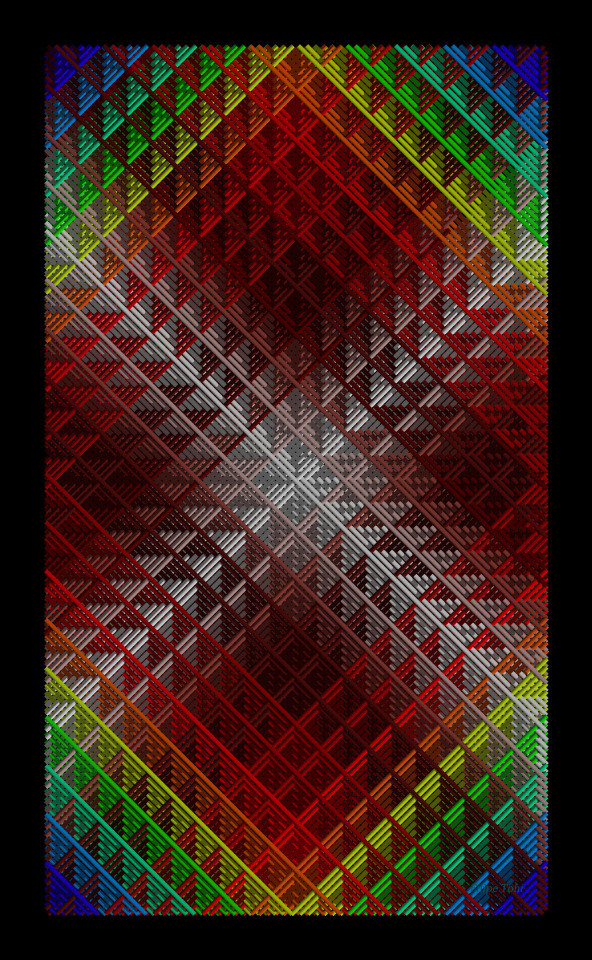
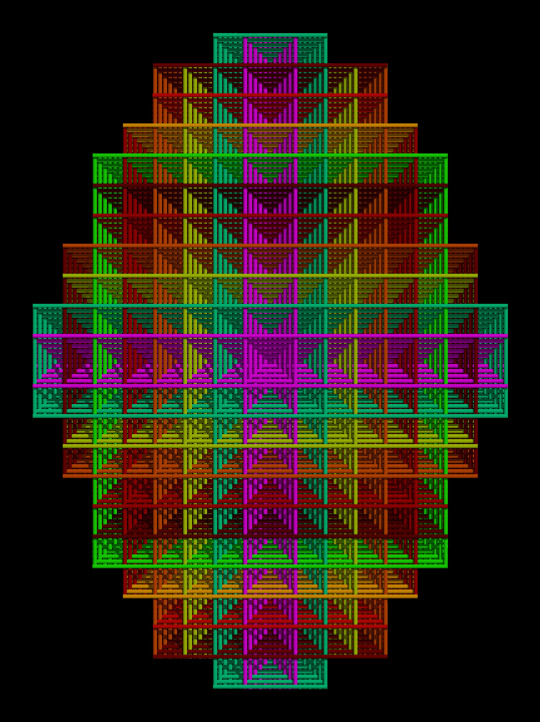
Filipe Tohi is also known for his sculptures, Tohi defines lalava as the ‘intersection of two strings that form patterns as they spiral up and down. Without both strings (lines) there are no patterns, both must go together’ Looking at these designs one finds a balance that can be equated with male and female; the lalava becomes a metaphor for the ways people and cultures interact. It is this notion of balance — of the interaction of two entities that so intrigues Tohi. He has attempted to demonstrate this in his models of the lalava designs. Expanding the patterns into three dimensions allows the viewer to see the geometric nature of the patterns, and more importantly to see them from multiple perspectives.
Sculptures by Filipe Tohi

Filipe Tohi has always insisted that lalava offer a way of preserving and communicating information. He describes lalava as a ‘visual language’ that can convey ‘principles of cultural knowledge and history’ as well as ‘memories and experiences’. It has not always been easy, though, for audiences to access all of the information encoded in Tohi’s lalava. The patterns of his sculptures and drawings often seem to connote rather than denote - they remind us, with their artful arrangement of lines, of the seas and landscapes Tonga, but they do not obviously communicate specific information.
Weaving
https://artsandculture.google.com/exhibit/inspired-crafts-of-samoa-ichcap/WAJCX9ba-dwMLQ?hl=en

Architecture of Atmosphere by Mark Wigely
In the text “The Architecture of Atmosphere” Mark Wigley talks about the importance of atmosphere in the architecture industry and what atmosphere really construct in a design. “Likewise, the atmosphere of a building seems to be produced by the physical form” The atmosphere is something that brings life into a space or a place. In the beginning of the text, Mark Wigley indicate the fact that the atmosphere of a building is by all accounts delivered by the physical form. The physical form helps to create the atmosphere around a space or a place. Atmosphere alluding to the sensorial characteristics of a space, it insinuates a prompt type of physical discernment, and is perceived through our enthusiastic sensibility. Actually, the atmosphere in a given space or inside is particularly controlled by the way a space is utilized and our discernment of the space is to huge degree likewise what we encounter. In this semester, we were given a site that is based in Glen Innes for our project assignments. The site was Omaru River. Omaru River is waterway in Glen Innes that is now one of the most polluted river in New Zealand. When we went to visit the site, the atmosphere from this waterway was different from the others, because Omaru River is now one of the most polluted waterway in New Zealand, the atmosphere change. The smell of the site was unpleasant. A fresh air brings life into a place, it also compose a space to be alive, and because the smell or the air around Omaru River was muck, the place became dead and lifeless.
Site Analysis


Auckland City has many different ethnic or national cultures mingling freely. It can also refer to political or social policies which support or encourage such a coexistence. Important in this is the idea that cultural practices, no matter how unusual, should be tolerated as a measure of respect. I wanted to highlight different cultures on my sit analysis, each colour represent different cultures moving around the city.

Design Concept
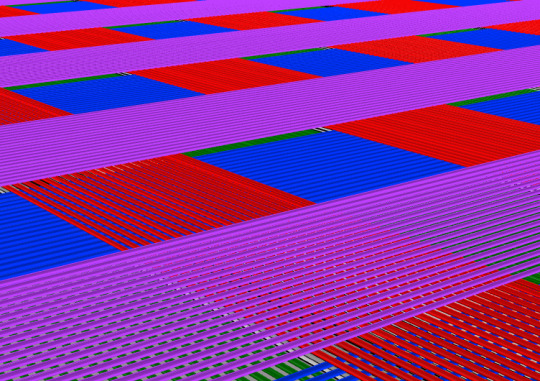
Research Context
“We understand colour in much the same way that we understand the shape of the earth. The earth is round, but we experience it as flat, and act on it according to that practical perception of flatness. Color is light alone, but it is experienced so directly and powerfully that we think of it as a physical entity. No matter what we may understand about the science of color, or what color technology is available, we believe our eyes. Color problems in the design industries are solved with the human eye. Designers work with color from the evidence of their eyes”. (Holtzshue, 2012)
Holtzshue describes how we experience colour in our everyday life. Colour is a tangible observation, and as any tactile discernment, it has impacts that are representative, cooperative, synesthetic, and passionate. This undeniable rationale has been demonstrated by logical examination. Since the body and brain are one element, neuropsychological viewpoints, psychosomatic impacts, visual ergonomics, and colours mental impacts are the parts of shading ergonomics. These being outline objective contemplations that interest adherence to secure human mental and physiological prosperity inside their man-made condition. The colour specifier/creator has the assignment of knowing how the gathering of visual incitement, its preparing and evoked reactions related to the hormonal framework, delivers the best potential outcomes for the welfare of individuals. This is of most extreme significance in differed conditions, for example, restorative and mental offices, workplaces, modern and creation plants, instructive offices, homes for the elderly, remedial offices, et cetera. Each inside themselves having distinctive assignment and capacity territories. Colour plays an important role in our everyday life, I mean colours has numerous impacts in our regular day to day existences. We have figured out how to react to specific hues in certain ways. For instance, red implies alert/blood/ stop.
Holtzshue describe colour as light (Holtzshue, 2012). The connection among light and architecture happens unavoidably. Light, contingent upon how it is utilized and how it can change the spatial setting. It can influence a space to appear to be wonderful or unpalatable, light likewise plays with scale or it could be utilized basically to feature components inside a space. In my experience with light and colour, these two components gives life to a space nor a place, it makes places more pleasant, agreeable, inhabitable and noticeable. Peter Zumthor in his book called Atmosphere, he mention that
“the light on things, is so moving to me that I feel it almost spiritual quality. When the sun comes up in the morning- which I always find so marvellous, absolutely fantastic the way way it comes back every morning – and casts its light on things, it doesn’t feel as if it quite belongs in this world.” (Zumthor, 2006)
Zumthor addresses the idea of light or colour and how it impacts us in our regular day to day existence. Light or colour helps makes that magnificent climate inside a space. Zumthor utilizes the daylight early in the day for instance of light that gives us life. At the point when that sun comes up in the morning, when I open the curtains and the light from the sun hits my face, that lights brings euphoria and fervour. It brings new life, new day and new me. We've all experience some tough occasions previously we go to bed however when we wake up and that sun ascends once more, it implies it's another day, disregard what happened yesterday and proceed onward.
Alnasser also mention that there are various perspectives in characterizing hues and their developments. The physicist characterizes colour to be not just a property of things, of surfaces, or spaces, yet additionally that inclination realized by specific sorts of light that can be seen and deciphered by the brain(Alnasser,2013). In addition, Alnasser highlighted the importance of colour and light to the human eye and how we experience it. Colour has the intensity of communicating sentiments and feelings.
Fort Lane at Night time


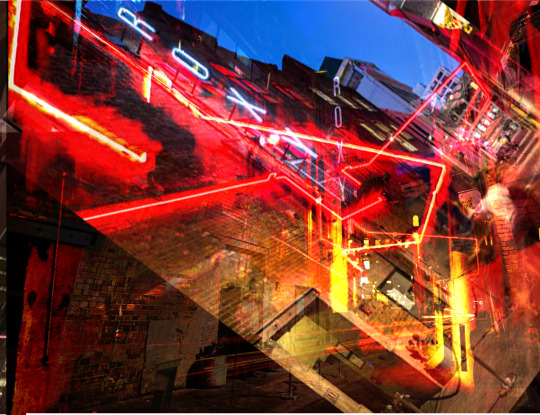
Experimental Design


Rough Design context (Walkway)
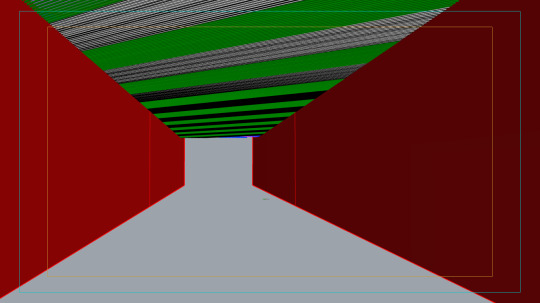
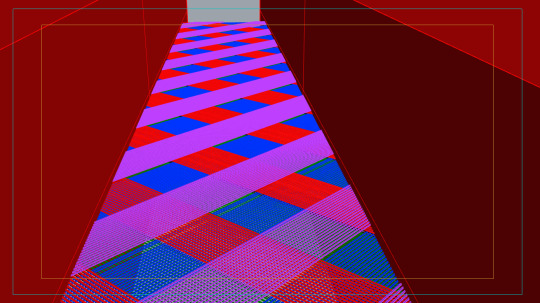
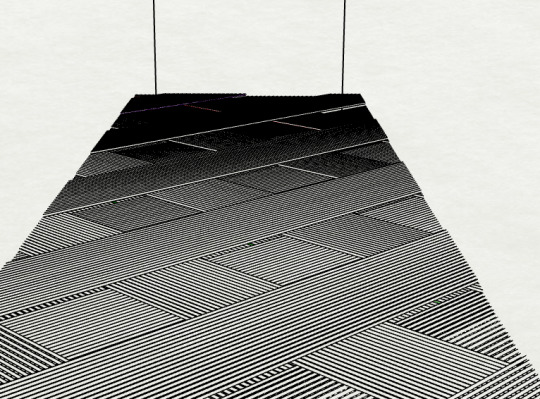


Renders


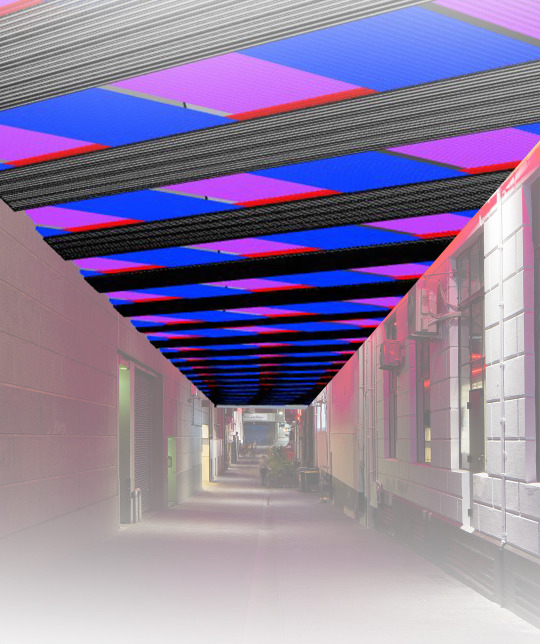
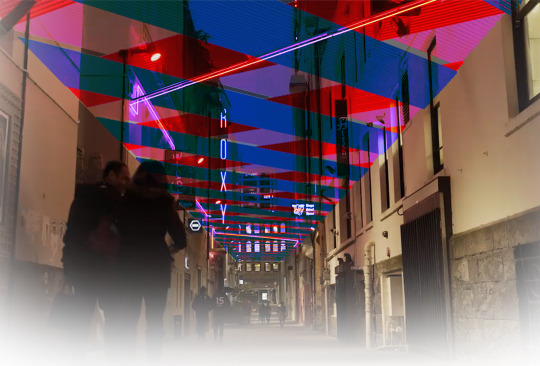
1 note
·
View note
Photo
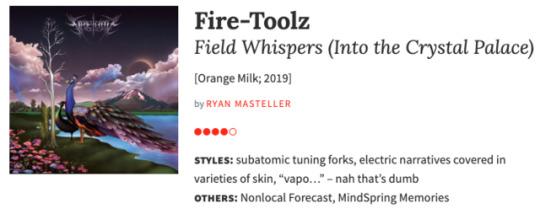
It was proven, it remains proven, that we are all electric narratives covered in varieties of skin, and that perfect sound can forever connect us to the infinite possibilities of being. We’ve lived these lives before, we’ve decayed through half-lives till chemicals and organics ceased to be different, merging instead at a subatomic level where electrons act as millions of tuning forks that have been perfecting themselves over millennia to form melody. They’re still evolving, obviously, awesomely: there’s no need for the utter endpoint of absolute perfection. We love our anomalies because those are what make everything interesting; they’re what spice up whatever we’ve got going for us at any given moment.
It was tracks in the snow that set it off, put me on a path of rigorous biological self-scrutiny, as words formed beneath revival tents of sound and blended into the sky while I contemplated the mystery of footsteps. These can’t all have been made by the same thing, the same being — there’s too much variation, too much separation of species to accurately convey a fitting reality. Yet I knew every single marking was mine, and the enigma deepened the more I thought about it. There was me as I expected me to be, human, “normal,” but there was also me in various other forms: bear, puma, peacock.As the sun shone, the snow melted, and every single footprint that was created by me-not-me lost focus and reduced its solid impression into a uniform flowing liquid, reducing clues to memories of hope and lost opportunities. But the air still holds its chill, and breath sharpens lungs to distinct points of reference in the midst of the clouding reality, a focus distinctly pinpointed, a beacon continuously glimpsed through the swirl of perceptual confusion.
Those points of reference are part of the body/part of the experience, a line increasingly blurred as external and internal commingle, digitized and encoded by Angel Marcloid into triggers of reaction. As Fire-Toolz, Marcloid has mastered the visceral and the aesthetic, allowing each to coexist in the confines of single time-demarcated sound fragments organized into the conceptual frameworks that we baffled and bewildered money-wielding apes refer to as “albums.” But with Field Whispers (Into the Crystal Palace), Marcloid has perhaps come as close as ever to offering a collection aligned so fully to the points of view of so many. In thrall, I move my shaking paw containing crumpled currency ever-so-dutifully closer to the human being behind the cash register.
But as fantasy and reality and other reality and maybe even further reality cease to achieve separation from the others, all possibilities enter the conscious mind at a cosmic rush and reduce the ideas of “corporeal” and “electric” and “soul” and “data” to meaningless fragments of the ever-widening Experience. As Marcloid steers us like a sheepdog toward the corral of the infinite center — in this case the “Crystal Palace,” a physical concept we can grasp while we are hurtling toward it — we are enlightened by Field Whispers until we plunge past the boundary of physicality where the snowmelt assumes the mantle of true metaphor and we/I manifest as All-Is-Me. Skin shed, we/I fully equal electric narrative, pass through a patch cord, and are/am saved to a server housing the Field Whispers (Into the Crystal Palace) masters, forever becoming synapses in its programming.
-Ryan Masteller/Tiny Mix Tapes [link]
1 note
·
View note
Text
An Exhaustion of Apples

What is true of one apple may not be true of another apple; thus more can be said about a single apple than about all the apples in the world.
That links to another post which quotes it, usually bad etiquette but despite reading all the Sequences I don’t remember it and it touches very directly on my reasons for writing this. Consider it a supplement, maybe.
The process of understanding involves abstraction and modeling, the breaking or deforming of messy reality into manageable parts. Different disciplines and professions have their own units or principles, (nigh-)universals, which field introductions will excitedly expound. Above very niche topics, most things you can study claim a laundry list of applications to the world and life in general - philosophy, biology, physics, many intertwined branches of psychology and sociology, geography, semiotics, chemistry, planetary motion, nature, conflict, spirituality, ad inf. When I was younger learning all of these bits and pieces was exciting, amassing knowledge or tools or understanding.
Now it depresses me.
I’m sure I’m not to the end, and I don’t want to seem like I’m decrying my massive storehouse of knowledge. There are plenty of fields I still want to understand at some point, but the will to actually do it is slipping or undergoing some kind of change.
I remember being so annoyed in high school when I learned about the three and five-act structures of drama. In hindsight it’s precisely the kind of thing that Aristotle would write when trying to explain fiction, but it felt so painfully limiting. Plenty of writing guides warn that fledgling writers tend to make ridiculous and obscure experiments that only become successful when done by writers who are already successful - so maybe my feeling wasn’t limited to me. But why outline it like that? If the structure of a coherent story will always immutably be that way, why teach it? And if it could be otherwise, why limit it?
Maybe that’s the crux. There are so many explanations of things that can’t be otherwise or which don’t meaningfully inform action. To know that dialogue always expresses one of a few things might as well be a challenge, and to see the underlying structure is to choke a sense of freedom that had happily coexisted with it in ignorance.
This is a bit puzzling, because some areas have this and some don’t. I’m not bothered by the idea that every molecule decomposes into atoms, or that every word I’m typing here is made up of a small alphabet. And yet it does bother me to consider the Library of Babel and know that anything I read would have some place there. Every book I read that’s unique to me reduces my enjoyment of others (real and Babelian) that are too similar. Combine that with Pareto, or with Sturgeon’s Revelation, and this beautiful notion of reading all the good books that have ever existed starts deflating. I don’t know when it stops, and I’m scared to learn.
Zen in the Art of Archery quotes another book, which I haven’t read, about swordsmanship. The swordsmanship book says that those who learn to use a sword actually become worse at it. Newbies are playful and relaxed, and when they realize how many ways they can be struck and how limited their situation is, they lose their cool. After that, it’s only through rigorous training that they win back this initial ease as something that can never again be taken away. I wonder if that’s what I’m inside of.
Or, another interpretation, maybe I’m just fed up with one kind of knowledge that doesn’t do much heavy lifting. Quantifying and breaking things down are both important, but alone they don’t lead to discoveries or changes, inventions or patents. I think I’ve read at least 500 books in the last five years, and yet I don’t feel capable of much more than I could do at 20. Maybe we just never feel competent in the first place (after all, we never feel incompetent until we’re introduced to the work) but I feel disappointed with this nuts-and-bolts approach.
The article in the first link makes the point that knowledge is specialization, where you can distinguish between the evolution that evolutionary biologists talk about and the “evolutions” of stars or technology. I come across the idea in Zen and elsewhere that nothing is boring, that the average person doesn’t exist because averageness is an abstraction, that the world itself is unendingly interesting, and I just don’t find myself capable of whatever perceptual contortion these people are doing. My interests don’t stretch that far - I’ll sprain them.
1 note
·
View note
Text
Essay代写:The means of expression of the art of painting
下面为大家整理一篇优秀的essay代写范文- The means of expression of the art of painting,供大家参考学习,这篇论文讨论了绘画艺术的表现手段。绘画除了具有再现具体物象的特性外,同时还潜藏着抽象性。无论是主流意识形态,还是多元化方向探索的前卫艺术,任何形式和手段都已被合理化,任何工具和材料都可以用来试验,任何观念和立场均可付诸艺术实践。追溯绘画历史的变迁,我们不难看出,科学进步的每一次推进,都会对艺术产生新的突破,绘画作为一种表现手段被赋予了丰富的内容。
Art, as a code hidden in human genes, as a way of life and way of life, is spiritual in nature. Artistic symbols involve painting, sculpture, photography, handicraft production, etc., and express the artist's creation theme and aesthetic value experience through the visual communication of material media.
Since the emergence of self-consciousness, the relationship between man and nature has changed fundamentally. Man and nature began to have a close and complex relationship. In the sense of genesis, the original "self-consciousness" of human beings is the chaos of various embryonic forms of consciousness that human beings later have. The gradual perfection of human organs and organisms, the development of psychological functions and the formation of human social relations are the basic conditions for the occurrence of art.
The emergence of painting is first based on the utilitarian needs of primitive people, and then it is possible to go beyond the practical and aesthetic. Rock painting is the first peak of prehistoric art. The paintings rarely depict people, and if they do, they are "mysterious" figures with masks and makeup. During this period, the primitive ancestors drew rock paintings as a kind of witchcraft activity to express their understanding and feelings in production and life, and rock paintings were used to meet their certain aesthetic needs. Therefore, the occurrence of prehistoric art may be derived from primitive people's psychological fear, awe and perceptual cognition of all things in the ancient world in the process of evolution and growth. If we say that the growth process of human consciousness is the source of all behavior creation, then the "crisis cognition and experience" of human survival and reproduction is also the fundamental driving force of primitive human spirit creation.
The connotation of the mental world in symbols refers to the complex psychology of human spirit reflected in the image of symbols. It includes unconscious reactions, momentary mental activity, mystical states of extreme passion, morbid psychology and dream consciousness. It is not limited by time and space, it does not pay attention to the form, but in the mind. This reminds me of van gogh's art, the painting with neurotic and laissez-faire atmosphere, which flows and sways freely under extremely indulgent conditions, giving people a kind of dislocation of movement and harmonious melody. He expresses another splendid world of symbols. In the process of artistic creation, specific artistic symbols must be assimilated by the psychological ability of the creative subject and become the most basic means and media to express their meaning.
In addition to the characteristic of reproducing concrete images, painting also contains a characteristic that is contrary to the obvious representativeness: the abstraction of painting. Therefore, the emergence of photography has renewed the existing attributes of painting. In 1839, daguerre, a Frenchman, announced the result of his photographic invention, which caused consternation among some painters of the time. An artist once sighed gloomily: "from now on, painting is dead!" But nearly a century and a half later, the result? Painting not only did not die, but flourished. Painting photography can not replace, because paint and conflict of different photography, painting is not the real object as the fundamental purpose of pursuit, but relatively abstract and explicit notation and the combination of internal and vivid image rendering, or aesthetic imagery in artistic creation by the form of psychological experience to explicit symbol of transformation, is inseparable from the main body of the soul to create fundamentally, processing, weigh and consider. Art is a substitute for reality, not the purpose of painting. People see shrimp, crab is not difficult, why should the old man baishi pen those "fake" "substitute" praise? As for the people, horses and cows in guernica, they are even more "painted away", but they are still regarded as immortal works.
In the category of cultural consciousness, art is a symbol that expresses ideas with images. Dadaism, which emerged during the second world war, explains this concept. In their works, there is no visual beauty. As for individuality, style, value, aesthetics, elegance, vulgarity and other concepts, they all disappear, leaving nothing but nothingness. As is known to all, ingel's famous "fountain" is almost a model of aestheticism, and duchamp gave the same name to the "unsightly" urinal. Dadaists use whatever means they can to create within the scope of imagination. They remove the boundary between art and life, thereby defying authority. The rebellion of dadaism deeply influenced the development of some literary and artistic schools in the 20th century. Including surrealism, pop art and concept art.
With the development of history, painters and viewers have paid more and more attention to a value other than the specific objects in painting: the metaphorical nature of artistic expression. Since the 21st century, with the development of economic globalization, contemporary art has presented a situation of coexistence and integration of diversified art pattern and mainstream ideology. The open vision also influences the traditional creation consciousness of painting. Contemporary artist CAI guoqiang has always stressed that "art is fun". Blasting is the best way of expression of CAI guoqiang. Many of his works are in the form of blasting. "CAI has literally exploded the accepted standards of artistic creation of our time," said curator Thomas kerns. It is the combination of historical and cultural metaphors and creative art forms that makes up today's CAI guoqiang, who is neither a simple cultural symbol nor an artist who simply pursues fun.
Through the fog of traditional knowledge, we can find that any form and means have been rationalized, any tool and material can be used to experiment, and any idea and stand can be put into artistic practice. Tracing back to the changes in the history of painting, it is not difficult to see that each advance of scientific progress will produce new breakthroughs in art, and painting, as a means of expression, has been endowed with rich content.
51due留学教育原创版权郑重声明:原创essay代写范文源自编辑创作,未经官方许可,网站谢绝转载。对于侵权行为,未经同意的情况下,51Due有权追究法律责任。主要业务有essay代写、assignment代写、paper代写、作业代写服务。
51due为留学生提供最好的essay代写服务,亲们可以进入主页了解和获取更多essay代写范文 提供代写服务,详情可以咨询我们的客服QQ:800020041。
0 notes
Text
Music Review: Fire-Toolz - Field Whispers (Into the Crystal Palace)
Fire-Toolz
Field Whispers (Into the Crystal Palace)
[Orange Milk; 2019]
Rating: 4/5
It was proven, it remains proven, that we are all electric narratives covered in varieties of skin, and that perfect sound can forever connect us to the infinite possibilities of being. We’ve lived these lives before, we’ve decayed through half-lives till chemicals and organics ceased to be different, merging instead at a subatomic level where electrons act as millions of tuning forks that have been perfecting themselves over millennia to form melody. They’re still evolving, obviously, awesomely: there’s no need for the utter endpoint of absolute perfection. We love our anomalies because those are what make everything interesting; they’re what spice up whatever we’ve got going for us at any given moment.
It was tracks in the snow that set it off, put me on a path of rigorous biological self-scrutiny, as words formed beneath revival tents of sound and blended into the sky while I contemplated the mystery of footsteps. These can’t all have been made by the same thing, the same being — there’s too much variation, too much separation of species to accurately convey a fitting reality. Yet I knew every single marking was mine, and the enigma deepened the more I thought about it. There was me as I expected me to be, human, “normal,” but there was also me in various other forms: bear, puma, peacock.
As the sun shone, the snow melted, and every single footprint that was created by me-not-me lost focus and reduced its solid impression into a uniform flowing liquid, reducing clues to memories of hope and lost opportunities. But the air still holds its chill, and breath sharpens lungs to distinct points of reference in the midst of the clouding reality, a focus distinctly pinpointed, a beacon continuously glimpsed through the swirl of perceptual confusion.
Field Whispers (Into The Crystal Palace) by Fire-Toolz
Those points of reference are part of the body/part of the experience, a line increasingly blurred as external and internal commingle, digitized and encoded by Angel Marcloid into triggers of reaction. As Fire-Toolz, Marcloid has mastered the visceral and the aesthetic, allowing each to coexist in the confines of single time-demarcated sound fragments organized into the conceptual frameworks that we baffled and bewildered money-wielding apes refer to as “albums.” But with Field Whispers (Into the Crystal Palace), Marcloid has perhaps come as close as ever to offering a collection aligned so fully to the points of view of so many. In thrall, I move my shaking paw containing crumpled currency ever-so-dutifully closer to the human being behind the cash register.
But as fantasy and reality and other reality and maybe even further reality cease to achieve separation from the others, all possibilities enter the conscious mind at a cosmic rush and reduce the ideas of “corporeal” and “electric” and “soul” and “data” to meaningless fragments of the ever-widening Experience. As Marcloid steers us like a sheepdog toward the corral of the infinite center — in this case the “Crystal Palace,” a physical concept we can grasp while we are hurtling toward it — we are enlightened by Field Whispers until we plunge past the boundary of physicality where the snowmelt assumes the mantle of true metaphor and we/I manifest as All-Is-Me. Skin shed, we/I fully equal electric narrative, pass through a patch cord, and are/am saved to a server housing the Field Whispers (Into the Crystal Palace) masters, forever becoming synapses in its programming. http://j.mp/2njgPLy
0 notes
Link
FOUR EPISODES into the new Star Trek series, Discovery, the crew receives a distress call from Corvan II, a resource-rich planet. A colony of humans is under attack from the Klingons. The victims, dilithium miners, flicker on screen, as miserable as anything we’d read about in Émile Zola’s descriptions of coal mining in Germinal. As dirty and distressed as the faces in a Dorothea Lange photo. Crying babies are so compelling! The Discovery, the closest ship in the fleet, is 90-odd light years away. They’ll never make it in time. But it turns out that the ship is equipped with a brand-new mode of transportation, a spore-based energy system that could, in theory, complete the trip in a few seconds. So, against the advice of his chief scientist, and even though the system may not be ready, the captain gives the order: go! Next, in a stunning display of visual effects, rings surrounding the ship’s saucer begin to rotate as the ship “spore jumps” just in time to drop a few torpedoes on the Klingon Birds-of-Prey. And before we can blink, the Discovery “spore jumps” back to its starting point.
The casual viewer might not make anything particular of this techno-aesthetic scene.
But as everyone knows, Trekkies are anything but casual. On their podcasts, forums, and blogs, they obsessively parse every word, every detail, making cross-references to the other series and movies of the Trek universe. They expect consistency across the whole franchise. Every Trekkie knows that in the original series (which begins 10 years after Discovery) ships are propelled, faster than the speed of light, by “warp drives,” a feat achieved thanks to dilithium crystals that moderate matter-antimatter (fusion) reactions. [1]
Needless to say, the appearance of these spores, as an organic method of propulsion, immediately raised Trekkie eyebrows. As one podcaster explained, “We know, assuming the timeline isn’t screwed up … we know it’s not going to work. We’ve already seen the twenty-fourth century and we know that they don’t have organic warp drives.” (STDP006 podcast: 10/10/2017; Golden Spiral Media.) At this point we don’t know how this apparent contradiction will be resolved. Maybe the spore drives only worked this once and consequently fall into oblivion. In episode five, the “Ripper,” a monster beamed aboard Discovery from a destroyed ship, is released into space. The monster had functioned like a living super computer, communicating spatial coordinates to the spores by some sort of symbiotic means. Michael Burnham, the show’s protagonist, figures out that Ripper is a giant (nuked?) version of an actually existing tiny Earth organism, the tardigrade, which can survive without nourishment for years and exhibits other notable characteristics of resilience. Maybe the best scientific minds will be unable to bio-engineer a new creature capable of withstanding the rigors of spore navigation so the whole enterprise will fall into oblivion. Maybe it will turn out that this tech was developed in an alternative timeline. Maybe the Borg are responsible for upsetting the natural course of things. Maybe it was all a dream. Or, god forbid, perhaps the producers of Discovery don’t care about the kind of consistency demanded by fanboys. Not likely. We’ll just have to wait.
Now I’ve watched my fair share of Star Trek episodes and movies, but I certainly wouldn’t qualify as a Trekkie. I’ve never put on Spock ears or attended a convention and I can’t identify the plots of TOS — the original series — from the titles. I’m someone who is interested in climate change, and recently, in decoupling fuel from energy to help think about forms of radical engagement to achieve rapid decarbonization. I couldn’t resist including an entry for “dilithium” in my book Fuel: A Speculative Dictionary (University of Minnesota Press, 2016), but according to my own criteria, it really shouldn’t be there. “Nuclear,” for instance, is a system of energy, so it doesn’t get its own entry, whereas “uranium” and “plutonium” do. Technically, as I mentioned, warp speed (speed faster than light) is achieved in Federation starships via a matter/antimatter (fusion) reaction. Dilithium crystals serve as a medium to help achieve this, but the actual substance that fuels the reaction is, to be precise, antimatter. I made an exception because the mining of dilithium is such an important and evocative theme throughout various quadrants of the Star Trek universe.
In a way, dilithium is like “hydrogen.” We talk about cars pulling up to filling stations and pumping in hydrogen instead of gasoline, but unlike oil, once removed from the ground and refined, hydrogen doesn’t exist as such, ready to be inserted into a vehicle. It has to be subjected to a process of catalysis before it can create energy to power the engine to turn the wheels. And for now, at least, that process is more likely than not powered by fossil fuels. The same kind of murkiness applies to “electric vehicles.” We can embrace them precisely because we only engage directly with one small element, the compact garage charger. We don’t have to see or think about the vast fossil infrastructure — out of sight, underground, or, “over there,” beyond our immediate perceptual horizon — that still persists at all levels of life while we drive along feeling pleased. The phenomenon of “carbon lock-in” — the idea that our globe is so deeply entangled with oil and coal that no good will gesture on the part of well-meaning individuals will have any significant effect — is hard to swallow. Distinctions between “fuel” and “energy” matter if we’re going to move beyond the kind of green optimistic haze that swirls around “future fuels” in the public sphere. It’s too easy to keep going these days with a vague sense of hope: if we only scale up some new technologies we can keep all the structures and systems we currently enjoy, replacing fossil-based fuels with renewable fuels. Like when you bring up the vast scale of climate change at the dinner table and your relatives say, “But I hear solar and wind prices are coming down and there’s nothing Trump and company can do about that. Coal mining isn’t coming back. So relax and have another glass of wine.”
And by the way, Star Trek apparently takes place in a post–climate change, post–fossil fuel world. “We” must have figured out a way to remove carbon from the atmosphere in order to avoid catastrophe, while also transitioning to “future fuels,” just as we will have overcome poverty, racism, and various other social problems. Note to Star Trek writers: I’m available if you want to hire me to introduce the shift to a post-carbon economy as a future theme about Earth’s past.
In Discovery, mining of dilithium goes on. (Incidentally, given the importance of the besieged outpost, Corvan II, as a source of 40 percent of the Federation’s dilithium supplies, why are there no Federation ships guarding the colony?) And if the whole matter/antimatter warp-drive system will someday be replaced by something greener and more powerful, we are still not there in the future. It’s hard not to hear echoes of our current energy transitions in the plot line.
Trekkies tend to revel in optimism, so they have generally been disturbed by the call by Discovery’s uncharacteristically dark captain, Lorca, to weaponize the spores to help in the war against the Klingons. Poor Lieutenant Stamets, the on-board astro-mycologist (named for an actually existing scholar of fungal remediation). He’s not only lost his colleague/rival on the Glenn, but now he’s reminded, rather bluntly, that his work is the intellectual property of Star Fleet. But aside from the analogy with academia, we might see another one, to the field of nuclear science. Fuels like uranium and plutonium do not harm on their own. “Peaceful atoms,” they could be used for peaceful purposes (energy). But they could also be enriched or inserted into a system that transmutes them for use on warheads. Things could go either way. Spores are, dare I say, rather queer. Stamets and the ship’s doctor are, by the way, the first openly gay couple on Star Trek. They are seen, in episode five, brushing their teeth side-by-side in their quarters, a fairly banal homo-normative scene following Stamets’s reckless and unsanctioned attempt to take over from the tardigrade in the first (and perhaps the last?) intergalactic human-mycelia displacement network.
On a more mundane note, the spores might make us think of the development of biofuels in our current “energy transition,” but without all of the negatives. The Trek spores have no need for other fuels to grow or distill them. They float around in space (the so-called “panspermia” theory) and grow in a magical forest in a gigantic on-board terrarium. There is no need to displace food crops, since food is replicated on board the ship. The spores don’t emit any byproducts, harmful or otherwise. And unlike other forms of fuels, the spores are not used up in combustion. It’s a nice immersive fantasy, not a bad set of images to take us away from all kinds of unbearable realities today.
I wonder: Could the writers of Discovery have read anthropologist Anna Tsing’s The Mushroom at the End of the World: On the Possibility of Life in Capitalist Ruins (Princeton University Press, 2015)? In the face of massive climate upheaval and other disasters, Tsing embraces the potentially redemptive qualities of fungi, as they continually adapt. Fungi are complex life forms that metabolize plants and coexist in different kinds of ecosystems, performing what she calls symbiopoiesis. They are, like the sparking special effects on the ship, beautiful. Like the World Wide Web, fungi offer infinite possibilities of recombination and new relations in the future. Stamets tells his lover he experienced a whole universe of possibilities when he was hooked up to the drive. Spores flying around the atmosphere (maybe even in outer space?) could configure forms of cosmopolitanism, the happy side of invasive species.
By the time you are reading this piece we’ll all probably know more about the spores on Discovery. Fans of the new series love to speculate. They consume and analyze it week by week, as it is doled out, in close to real time, so it seems appropriate to me to do so here. In comparison, TOS, shown on network television in the late ’60s, had self-enclosed and self-resolving episodes. Serialization is crucial, of course, to 19th-century literature. It’s how kids read the imaginary voyages of Jules Verne. Week by week in the newspaper. And Verne is, for me, the most important writer for thinking and dreaming about possible relations to fuels. So let’s see what happens, but meanwhile, back here on early 21st-century Earth, time to mitigate is slipping away, tipping points are fast approaching. Catastrophic events made much more likely by rising sea levels and warming global average temperatures are pulling apart life as we know it. So it is all the more imperative to ask what is meant by “the future” when one talks of change. Is the future something we project for ourselves on screens? Star Trek offers us a mirror of our better selves. In the future humans are still flawed, and so are those other species that we coexist with in complex relations that bear traces of our own past forms of colonialism, benevolence, communitarianism, exploitation. Overall, though, contact with extraterrestrial beings and places has led to the social and cultural evolution of the human race. The future is bright.
Ultimately we should be wary of thinking about those spore drives as part of a narrative of progress, one that could simply allow us to defer now, in the present, any radical shifts in how we produce and consume energy. This narrative presents a tyranny of common sense that defers new fuels to a future that is just around the corner, but not yet. It governs statements like:
Human history is a record of endless human innovation, most of which has improved the human condition. Who knows what energy sources and technologies of the future may trump the energy benefits of fossil fuels?
This comes from the pen of one Kathleen Hartnett White, in a policy brief titled, “Fossil Fuels: The Moral Case” (2014). White, a former regulator in the Texas oil industry, has just been named by Trump to chair the Council on Environmental Quality. She illustrates her case study for the benefits of fossils with images of poor Americans, including what may be Dorothea Lange’s most iconic image, “Migrant Mother.” How does this image of a desperate mother with her children, displaced dustbowlers in California migrant camp in 1936 help White battle what she calls the false hysteria over climate change? [2] Without fossils, White asserts, we would never have developed beyond subsistence farming. Do we want to go back to this? Of course not — we all agree, right? So for now, let’s enjoy the benefits of carbon-based energy and wait for history to take its course.
It’s with this kind of reasoning in mind that I will wait to see what happens with the new spores on Discovery. I’ll forget the present, for an hour, but I will still be up at night with periodic panic attacks about our future on this warming planet. At least I’ll have the Star Trek podcasts keep me company.
¤
Karen Pinkus teaches at Cornell University where is currently a Social Science, Humanities, Arts Fellow in Residence at the Atkinson Center for a Sustainable Future. She is the author of Fuel: A Speculative Dictionary (University of Minnesota Press, 2016).
¤
[1] There are several book-length studies of the science of the Star Trek franchise. Lawrence Krauss, The Physics of Star Trek (New York: Basic Books, revised edition 2007) goes into the function and plausibility of warp drive and dilithium in great detail.
[2] The photograph, in the public domain and so available for use in any context, actually has a complex history. Many years later, the subject, Florence Owens Thompson, asserted that she had never spoken to Lange, who apparently embellished her story of the interaction. I doubt that White has thought through the bigger question of the relation of the Dust Bowl to soil depletion, wheat farming, New York bankers, and so on. She’s only reading Lange’s photo with a single signifier: poverty. And that is, for her, so morally bankrupt that it alone should squelch any discussion of moving beyond fossils, beyond business as usual.
The post “Star Trek: Discovery” and the Dream of Future Fuels appeared first on Los Angeles Review of Books.
from Los Angeles Review of Books http://ift.tt/2AZSLzW
0 notes
Text
THE PHILOSOPHICAL APPROACH
The human being has always lived and coexists with things around him.
This idea is taken into account by the well known philosopher Martin Heidegger in “The thing” (1971). In this extract he explains the basic functionality of an “object” using the example of one jug, which differ from the material that gave its origin, the clay identified as the“thing”.
Object Oriented Ontology (OOO) was the school of thought which was influenced by Heidegger’s philosophy. The term “Object Oriented Ontology" was coined by Graham Harman, one of the main exponents of theory, in his 1999 PhD Tool-Being: Elements in a Theory of Objects. The ontology rejects the privilege of human existence on the existence of non-human objects, in contrast to the "anthropocentrism" of Kant, objects conform to the mind of the subject and become products of human cognition. Object-oriented ontology claims that everything is an object, whether living, not living, artificial or conceptual.
Contrary to the dominant strains of 20th-century phenomenology that say that things are only real as they are sensitive to a human subject, OOO claims a radical and imaginative realism that not only states that things exist beyond the scope of human conception, but that nothing has a special status, everything exists in the same way: table, cotton, DVD players and trees, for example.
Graham Harman expresses stories, ideas, and influence of OOO, through the study of art and literature, politics and natural science.
The approach in the artistic field by OOO is to give attention to the idea that objects are real, imaginary, natural, artificial, human or non-human.
The viewer aims to read an artwork in terms of intent from the psychology of its creator and from its location in the historical canon compared to other traditional criteria. These modes of thinking reduce the object to relationships with human viewers.
Instead, Timothy Morton a proponent of Object Oriented Ontology, writes that: "a work cannot be reduced to its parts or its materials, nor can it be reduced to the life of its creator, art comes from anything. The art object acts on its viewers, a property that all objects possess” (No date).
Artists are people who spend their time attributing new meanings to common objects, thus expressing the notion that the objects themselves can reveal different faces naturally.
THE DEVELOPMENT OF TECHNOLOGIES IN SOCIETY
In parallel between 1870 and 1900 appeared for the first time a series of instruments, machines, objects of domestic use that transformed everyday life: the light bulb and the electric elevator, the petrol engine and the tires, the telephone and the gramophone, typewriter and bicycle, electric tram and car. It was the moment when arrived the second industrial revolution, a revolution that was less radical than the first one, related on its long-term consequences, but certainly showed its effects on a larger area and had a diffusion more widespread, it changed the habits, behaviors, consumption patterns of hundreds of millions of men and women, a change between technology and the world of production.
Technology is the science that studies the production processes, the methods that realize all objects that are daily used.
Technology was born at the precise moment when man, needing a particular object (a weapon, a tool etc.) began to think about how to build it.
New technical discoveries have made the human being more spectator and less personally involved in the phases of industrial production, a concept which keep’s raising doubts and concerns already experienced at the time of the first Industrial Revolution. New technologies are taking over the employment of workers due to the ability to do what the man does by saving time and costs. Despite the fact that human beings are still needed to command and build this new mechanical “help", the idea that people can be put aside because a robot/computer is perfectly able to replace them is a frightening and disturbing thought. An additional negative aspect of this run toward technology is linked to the consumer abuse of the final products, often gathering unnecessary needs.
In conclusion technology brings an improvement available to everyone, but it is necessary to question which are the consequences of the given invention but also the motivation that led to its production: the world has evolved and some great discoveries would not have been possible without technological progress, but it is necessary to keep questioning why humans takes a certain direction, that is actually useful to the whole human race and are willing to lose along the way.
The French philosopher Paul Virilio explain’s how technological changes have significantly altered the way people perceive things, and also how the invention of photography, film video, and computer simulation represent paradigmatic turning points of abilities for presenting, representing, creating, simulating and perceiving objects, images and situations of our life.
Virilio's main criticism of technology is linked to the cult of speed and acceleration and to have homologated choices in totalitarian and imposing motion.
Virilio developed the theory called the 'war model' of the modern city and of human society and is the inventor of the term 'dromology', that means the logic of speed that is the foundation of technological society. He was applying this theory to western political and military history, showing the resistance of speed and movement that the physical world adapted, in order to satisfy the desire to move further and faster.
“We're not going anywhere. We are satisfied for departing and to separate ourselves from what is alive, to the benefit of the vacuum of speed.”
A negative prophecy on the disappearance of humanity is at the center of the essay 'The Negative Horizon' - Paul Virilio devoted this essay, in 1984 to the revolution of transport and communication.
Virilio channeled the theme of speed as the ultimate goal of these advances. With the latest technology developments, humanity "is producing a precise idea of nothing and absence."
The real time of the immediacy of communication is the conquest so far more original and more specific of human history, but has the perverse effect of bringing us into a non-reality.
Virilio's thesis is that it has a perverse effect to be in permanent contact with anyone in the world, without even talking to the people next to us: it is "the expression of the decline of the unity of closeness”. (cite)
For instance, a current phenomenon that meet this parameters, can be described by the initiative of ‘Google’ and ‘TIME research’ that have been working together generating ‘Timelapse’, a software that let people watch the Earth through historical metadata, it shows how humans were able to change the planet through manual activities (such as editing large areas of land, construction of new cities and infrastructure).Timelapse is an excellent conjugation of two very distinct services: Google maps, enhanced by high-definition satellite views, and in-depth editorial TIME that was able to re-interpret the satellite images. Timelapse, however, is able to show an evolution less pleasant where is represented the Earth’s weakness against machines and the human progress with the effects of global warming as a sad reality. The Timelapse software is a magnificent dissemination tool, sponsored by Google and TIME, two communication giants of the web perfect collision of old and new media) that offer an objective view of the important changes which in recent years have characterized our planet.
Technology can not exist without the possibility of unexpected issues, what is unpublished, unpredictable. When it was invented the train, technology and the railway catastrophes came along as consequence. Technocracy censures accept only to see the positivity of its object and disguises without posing the accident. It is probably the most concise and eloquent explanation of causality; Virilio expands this maxim to the whole of his message. Paraphrasing, Virilio warns the community that every technological invention contains at its genetic level its own defect, and that the cult, aroused by technology, for speed and acceleration will mean the death for all. (cite)
Life became fast, every action is running with the time.
Humans run, must do, must act, and technology helps to produce more and act better.
Virilio does not give a solution to this problem, analyzes it, saying: “When humans came to the end of race in life, pulling the sums, can only say that he ran, thanks to the technology, but there will be a question: with all this running, did he really live? “. (cite)
The perceptual process help to experience the world around. Taking a moment to think about all the things perceived on a daily basis at an any given moment, for example it might be seen familiar objects in the environment, their touch, their aroma of a home-cooked meal and the sound of music playing in next door neighbor's apartment. All of these things help to make up the conscious experience and allows the people to interact with objects around.
0 notes